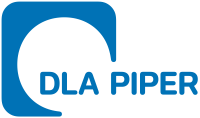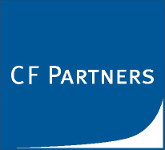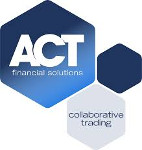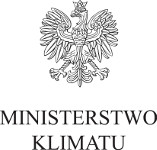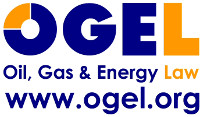| Article Index |
|---|
| Start |
| Photo gallery |
| Previous editions |

On February 6, 2020 in Warsaw, the seventh edition of our seminar "Emission and a Trading Summit" took place. Every year, it gathers a wide spectrum of traders and analysts related to CO2 emission allowance trading. This is the most important event in Poland for this market, taking place every year.
This year's edition was moderated by Mike Szabo, Director and Co-Founder of Carbon Pulse. Mike previously worked as a correspondent for Reuters and Point Carbon on the environmental market from 2007 to 2014. He extensively discussed global carbon markets and climate policy. He was also the editor of Thomson Reuters Carbon Market Community. Earlier, Mike worked as an analyst at Reuters and JP Morgan in London and TD Securities in Toronto. He obtained an MBA from the University of Southampton and Honors Bachelor of Commerce at McMaster University, and dual British and Canadian citizenship. Carbon Pulse is an online, subscription-based service that aims to provide in-depth news and intelligence on carbon price initiatives and climate change policies around the world. Our focus is mainly on emission trading markets and other methods of using taxes and market mechanisms to reduce greenhouse gas production.
In his opening presentation, he discussed current trends on the CO2 market and predicted what to expect in phase IV: "After market turmoil in 2017 and 2018, prices in 2019 stabilized at between 23 and 28 Euro. The main reason for the current price level is MSR and the transfer of almost ¼ of available allowances on the market to the reserve by 2023. Another element of market changes was undoubtedly Brexit - Great Britain will remain in the ETS system at least until the end of 2020, but it has not been announced yet what their CO2 management will look like" - Mike concluded.
Another speech was given by Paweł Różycki, Deputy Director of the Department of Air Protection and Climate Change at the Ministry of Climate. An expert in the EU ETS greenhouse gas emission allowance trading scheme. In the Ministry of Climate since 2006, he has been dealing with issues related to the EU ETS since 2009. He participated in the work on the EU forum on issues related to the auction of greenhouse gas emission allowances, rules for the allocation of free emission allowances for industry and energy, backloading and the reserve mechanism stabilization. At the national forum, he co-created legal acts regulating the functioning of the EU ETS in Poland. "Since December European Council, there has been a lot of talk about climate issues. We think that maybe we will not be able to achieve climate neutrality by 2050 as other EU countries have pledged. However, this does not mean that the country present lack of activity in this area. Of course, we are obliged by the provisions of the Paris Agreement to achieve climate neutrality and we will do it, but it is not certain whether we will maintain the pace of other EU countries. We are still in the negotiation phase, the June Council is ahead of us. 2020 is a breakthrough not only because of climate neutrality but also because we are finishing one accounting period under the EU ETS, and in 2021 we are starting another. The New Green Deal is a factor that can affect price formation in 2020. As announced by the European Commission, in 2-3 years there will be a lot of proposals that will shape the market and affect the ETS and non-ETS systems. So far, the largest issuer that was supposed to reduce emissions was the energy sector. At this point we are talking about emission reduction by the entire economy - energy, industry, transport, construction, agriculture, circular economy and others. In my opinion, the next turning point will be this year's summer when the assessment of the possibility of increasing reduction targets for 2030 will appear. The increase is obvious, we are only interested in the level. We have recently completed negotiations on ETS and non-ETS. I think that support mechanisms such as the modernization fund or issues of allocation of auctioning rights to member states will be on the agenda" - the speaker added.
The most important current regulations for the EU ETS were discussed by another speaker - Radosław Maruszkin, an advocate from DLA Piper. He specializes in environmental protection law and European Union law. In the field of EU ETS, he advises installations covered by the system on a daily basis. In the area of environmental law, he advised, among others in the field of investment impact on the environment, water law, integrated permits, air and climate protection, international and national waste management as well as planning documents related to environmental protection. In the area of European Union law, he advised, among others for one of the EU agencies and in the scope of EU regulations related to energy and environmental protection, the law-making process, access to public documents and EC marking.
He divided his presentation into two parts - on international and EU law and national regulations. "The main reason for changes in the Polish ETS system is international law. Climate law is created at many levels and uses a specific language resulting from political factors. International climate law obliges you to protect the climate, including by reducing greenhouse gas emissions. Examples of such laws are the United Nations Framework Convention on Climate Change of 1992 and the Paris Agreement. The last goal is to protect the climate by limiting the increase in global average temperature to a level significantly lower than 2 degrees Celsius above pre-industrial levels and striving to limit the increase to 1.5 degrees Celsius. The regulations of international law affect the changes in the ETS, including the amendment to the ETS Directive." - he said.
The presentation before the coffee break was given by Mateusz Dziudziel, Fuel Department Manager at LOT Polish Airlines. Before working for PLL LOT, he was the supervisor of key clients such as Eurolot and PLL LOT in a private company from the aviation sector. He was responsible for preparing carriers for the EU ETS audit and for carriers to perform all tasks arising from this system. Currently, he is the Fuel Manager, which focuses on coordinating all fuel processes at LOT Polish Airlines. Carries out activities to implement the best principles and practices in the field of fuel efficiency.
In his lecture he discussed the issue of emissions reporting from an EU ETS operation and the challenges of reporting emissions from an air carrier's perspective. "As an air carrier, we've been looking for alternative fuels for years to help us reduce emissions from our flights. Unfortunately, such fuels are less than 1% available on the market. Hence, carriers who refuel alternative fuel in ports from our connections (this is only possible in LA and Amsterdam), refuel no more than 100 tonnes of fuel per year. This means twice the route from Warsaw to LA. It's still a microscale, and the maximum JET A1 fuel blend is a 50/50 blend that must meet the ASTM D1655 aviation fuel specification. In our opinion, the quantity of the SAF product will never constitute a majority share in the entire market due to not only logistical and technological challenges but above all insufficient availability of the raw material from which the final product can be manufactured. It is not possible that it would be 80-90% on a scale of all products, unfortunately this is the reality. Turning to emission verification and reporting - each carrier must submit an emission monitoring, reporting and verification plan. This is a list of regulations and obligations from which we - the carrier - "confess" before the verifier. From how we will count emissions and how we will ensure the accuracy of measurements, taking into account the fuel consumption, which is different for each aircraft and its engine. Consumption depends on whether, for example, the engine is new or whether the airframe has degraded. The system is complex and may vary depending on the nature of the air operation. " - stated the representative of LOT Polish Airlines. In the further part of the presentation, he discussed in detail the methods of calculating emissions for flights and presented systems supporting LOT Polish Airlines in the digitization of fuel data analyzed for reporting purposes.
The presentation after the coffee break was given by Jan Drabowicz, Derivatives and Emissions Trader at Grupa Lotos. A graduate of the University of Gdańsk - the faculty of economics, the Academy of Physical Education in Gdańsk and postgraduate studies at the School of Logistics in Poznań. With Grupa Lotos S.A. (formerly Rafineria Gdańska S. A.) associated since 2003, mainly as an analyst and planner in the field of trade. Since 2012, he has been associated with the trading office where he is responsible for market aspects related to trading in carbon dioxide emission allowances for the entire Grupa Lotos S.A. Capital Group and hedge transactions on commodity markets.
In his presentation, he discussed the issues of managing CO2 emission allowances at an oil refinery. "The management of CO2 emission rights in Grupa Lotos is dispersed into three areas: the Environmental Protection Bureau, the Financial Risk Analysis and Control Office and the Foreign Trade Division. The Environmental Protection Bureau deals with everything that is at the regulatory level - giving opinions on legal acts, activities related to free allowances and actual verification of emissions in GL from two installations we have - a refinery and CHP plant. Every month we receive verification for a given month and once a year - an annual report. The Financial Risk Analysis and Control Office, based on data from the environmental protection office such as e.g. actual emissions and free / planned / allocated free allowances, creates transaction limits that are transferred to the area in which I work - Foreign Trade Division. Based on these limits, our department concludes transactions. Thanks to this data, we know how much we can buy or sell. Our task is to perform transactions for the entire capital group both on the physical and futures market. The company has two installations I mentioned earlier - a refinery plant and a combined heat and power plant. For these entities, we are obliged to buy the right amount of allowances. The allowance trading itself is mainly ICE contracts, December (December 2020 at the moment). Of course, there are ICE spot contracts, or very rarely OTC (we use them mainly when it comes to derivatives)." - emphasized Jan Drabowicz. Later in the presentation, he presented detailed data for the second and third phase of the ETS, as well as forecasts for the fourth phase.
The presentation before the discussion panel was given by Wojciech Kukuła representing ClientEarth and Filip Piasecki from Aurora Energy Research. Wojciech is a lawyer working in the Polska Energia program at the ClientEarth office in Warsaw. He specializes in regulations regarding the energy sector, in particular in the field of renewable energy sources and public aid. Wojciech is the author or co-author of numerous analyzes and reports in the field of energy transformation, power markets, wind and prosumer energy as well as the consumer's position on the energy market, as well as the implementation of EU ETS regulations in Poland. Filip is a Senior Analyst in Aurora, dealing with the company's activities on the Polish market. An engineer by profession, specializing in interactions between the power system and the energy market. He gained experience in the Boston Consulting Group and Transition Technologies, working mainly in the conventional energy sector. In their lecture they discussed the conclusions for the Polish power industry in the context of the fourth settlement period and presented the report "EU ETS reform: how not to waste another chance to decarbonise the Polish economy?".
"We would like to synthetically present the conclusions of the report developed jointly by ClientEarth, Aurora Energy Research and Zajdler Energy Lawyers & Consultants. The Polish national investment plan assumed 70% modernizations in the area of broadly understood coal energy. More than half of the investments have not been implemented, and around ¼ of the allowances allocated under the derogation have been granted in relation to one installation - Bełchatów Power Plant. We come to a consensus that these funds could be used much more effectively in the long term, but we also understand that the negotiations of the plan took a long time, and in the meantime market conditions have changed a lot. As for the challenges regarding the implementation in Poland of the fourth EU ETS settlement period, we have come to several conclusions. In terms of spending funds, the most will really depend on non-statutory provisions. We have more freedom in spending rules and, for the first time, no free rights under article 10c. From 2021, a new obligatory mechanism will appear, which we have been talking about for a long time - the Modernization Fund. Poland is entitled to half the pool of this fund. Interestingly, the amended directive no longer requires support for the modernization of professional energy. The funds from the fourth ETS period are a chance for Poland to transform the entire economy and it would be more efficient to spend them in relation to sectors not covered by this system, where we do not have nationwide multi-billion investment programs, and at the same time we have a rigid reduction target (-7% in non-sectors -ETS until 2030). In our opinion, these funds should support the modernization of the transport sector (where emissions are still rising), energy efficiency, or - which has already begun in part - prosumer generation. They could also finance economic transformation at regional and local level, especially in mining areas particularly affected by pollution." - the speakers finished.
The next part of the program was the discussion panel "Current and forecast trends affecting the functioning of the CO2 market."
Moderator:
Jacek Mizak, Climate & Energy Expert
Participants of the discussion:
Paweł Mzyk, Manager, National Center for Emissions Balancing and Management
Phd Andrzej Brożek, Chief Market Analyst, Market Analysis Team, Tauron Polska Energia
Mieczysław Cezary Olszewski, Country Manager, Redshaw Advisors
Wojciech Czajkowski, Trader, ACT Financial Solutions
The moderator began a discussion panel with a question to Paweł Mzyk about the summary of the CO2 market in 2019. "Regarding the factors that influenced the formation of emission prices in 2019, I would divide them into two groups - supply, e.g. SMR, which removes the appropriate amount of allowances from primary auctions. In 2019 and 2020, we estimate that it will be about 800,000,000 allowances, which is quite a large amount that has a very large impact on the price. Another obstacle was the suspension of the sale of British allowances last year due to Brexit. They are to be resumed on March 4, so it may affect the current price. I would add some arrangements about the Green Deal - it is not known how it will go, what the final arrangements will be, which certainly raises some concern. This uncertainty induces market participants to make larger purchases" - he concluded.
Another question was directed to Andrzej Brożek - it concerned how the New Green Deal influenced the operations of Tauron Polska Energia and what it looked like in 2019 on the CO2 emission allowance market. "I can say that the company I work for constantly monitors the issue related to EU regulations in the field of energy and climate. From our perspective, the price of CO2 emission allowances is the result of several factors, which include regulations and the broadly understood market environment. Regarding the regulation, the situation is clear - Brexit and green order. Speculation in 2019 mainly concerned Brexit itself and how to distribute British allowances in 2020. At the beginning it was said that British allowances may appear on the market in the first quarter - now we know that the auctions will start on March 4, and the entire volume blocked in 2019 will be distributed throughout this year. Another issue is the market environment, including mainly gas and coal prices - as early as mid-2019, gas stocks on the continent were characterized by a significant increase in raw material compared to a similar period of the previous year. A similar situation occurred in connection with coal prices, an increase in stock levels in ARA ports, no meteorological conditions for an increase in energy demand, a decrease in the share of coal in the structure of electricity generation in Europe led to a large decrease in ARA coal prices. As a result, in 2019 the emission allowance market had a dual character - the first half of the year was marked by price increases from EUR 18.40 to EUR 29.95 / Mg, while the second half of the year despite the fact that prices fluctuated around EUR 25 / Mg, however, they maintained very high daily variability" - he concluded.
Mieczysław Olszewski, Redshaw Advisors, commented: "We are observing a more mature approach to making decisions at a higher financial level. I am thinking of the financial risk involved in making decisions - we do differently when buying EUA for 5 euros and differently when they are already 25 euros. Such transactions require different preparation. From the perspective of our company, which more than a year ago entered the Polish market with British know-how to help reduce the risk and costs of purchasing on the stock exchange, we believe that most domestic installations registered in the ETS are properly preparing for it and are able to make the right buying decisions, minimizing financial risk. Our estimates show that there are still about 1/3 of companies that have not done so professionally and do not have a financial risk management strategy related to the purchase of CO2 emission allowances on the stock exchange. Unfortunately, some CEOs of these companies believe that since they've been doing so well for so many years, when the EUA cost a few euros, they can do it without help, without strategy. Ladies and Gentlemen - this is unfortunately not the case. It is important to understand that, whether or not, together with CO2, installations have entered the European stock exchange since 2018 and are currently competing with the largest investors, players who have entire analytical departments and independent advisory teams, such as our company, and definitely more capital. These installations, acting independently, are already at a loss in the position of the other participants of the stock exchange. This awareness is not yet on the boards of many enterprises, it is not on the supervisory boards or in the ownership bodies of municipal companies. Private companies are doing much better by implementing developed purchasing strategies. Installations in Western countries buy 2-3 years in advance. This gives them significant savings and a much greater freedom of shopping compared to those enterprises that are only now buying in 2019 in February 2020. In Poland, few buy EUA in advance for 2020 or 2021" - he commented.
Wojciech Czajkowski from ACT Financial Solutions was asked to comment on market behavior: "I have a slightly more optimistic view of the Polish market compared to the previous speaker. Poles as buyers are often more professional than Western countries, especially those with a surplus, which are interested in the market when selling allowances from allocation. This is because 2018 was a breakthrough year in terms of prices, which resulted in "waking up" many market participants. From my perspective, 2019 is the professionalization of the market in our country. Of course, there are still many companies that are not sufficiently aware of the current market situation, but their number is decreasing. At the moment we can see that companies that for many years, not only in Poland, marginalized the subject of ETS and treated it as a side expense that does not have a significant impact on their financial results - they try to approach the subject by comprehensively implementing strategies and making more informed decisions. Less and more experienced players are also now increasingly using financial instruments such as futures and options that require some financial knowledge. This is not the main area of activity of many of these companies, but it is a worth considering alternative to managing your capital only as part of spot transactions" - he summarized his statement.
Jacek Mizak directed the further part of the discussion on Brexit - how will the permanent reduction of the allowance pool affect prices and will the UK permanently remain outside the ETS?
"We have a transition period until the end of the year. Everything indicates that installations located in Great Britain will continue to be a market participant in 2020. In the short term, nothing should happen. On the other hand, a year is not a lot of time so it can be different. It should be expected that the installation invoices have a lot of rights saved or result from the purchase policy - making purchases well in advance. I also don't know when the British will start selling surpluses. If during the transition period the United Kingdom creates its own rights management system, then I would forecast considerable market movement and a reduction in prices." - commented Paweł Mzyk.
"Everyone is tired of Brexit and its effects. We, as Redshaw Advisors, see four options as a solution to this situation. The first, of course, will remain the UK as a participant in the EU ETS market as before. However, this is unlikely due to the pro-ecological approach and the desire to implement it quickly. The second scenario is the creation of an ETS-like system that will be compatible. This is the most likely and preferred option by the government. The third option is to create a completely separate and different emission allowance management system - troublesome due to the amount of work before and during implementation on the market. The last - strictly tax scenario - receiving tax benefits. The final decision has not yet been made, we think the most likely version compatible with the European version of the ETS." - summed up Mieczysław Olszewski.
The last presentation was given by Andre Tzschoppe, Senior Project Manager at European Energy Exachange. He has been working at European Energy Exchange AG since 2016. In this function, he is, among others, the contract manager at the auction of emission allowances under the EU ETS on behalf of the European Commission for 28 states, including Germany and Poland. In 2004-2016, André worked in several positions in the energy industry, focusing on natural gas. He presented updates of the European emissions market from the perspective of the power exchange. "EEX is a leader among energy exchanges in Europe. We develop transparent and secure markets for energy and commodity products. We operate in the central-western area of Europe. In 2019, transactions on 6428 TWh were concluded on the stock exchange. We organized 217 emission auctions. Free allowances dropped considerably from the second to the third billing period. Forecasts for the beginning of the fourth period assume even greater decline by 2030. We anticipate demand over supply. If we compare the issue price year-over-year in December 17-18 to December 18-19, we can see an increase of + 57%! In contrast, trading volumes have dropped by as much as 23% compared to the same periods" - the speaker concluded.
The Strategic Partner was PGE Dom Maklerski S.A.
Redshaw Advisors and DLA Piper were Partners of the conference
CF Partners presented itself as an Exhibitor
ACT Financial Solutions presented itself as an Advertiser
This article was written based on presentations displayed / delivered during the seventh edition of the Emission and Energy Trading Summit, which took place on February 6, 2020 in Warsaw.




